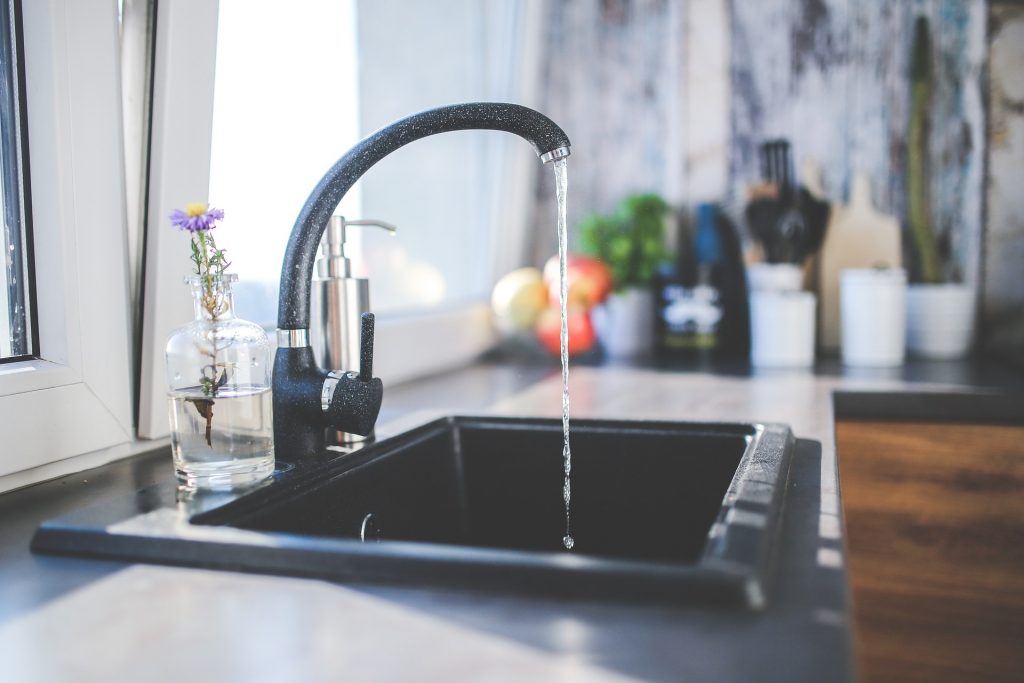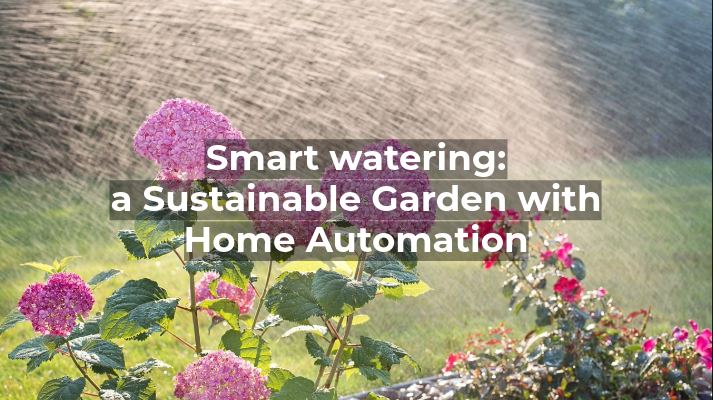The Importance of Water Consumption 🚿
Water is one of the most vital resources for human survival, but it’s also crucial for maintaining the balance of the Earth’s ecosystem. 🌍 The issue of water consumption is more relevant than ever. With a constantly increasing population and a growing demand for water in agricultural, industrial, and domestic sectors, taking steps to protect this limited resource is essential.
In this article, we’ll explore the challenges of water consumption, including the impact of smart home technology on water management in intelligent homes. We’ll also discuss the measures we can take to ensure sustainable use of this critical resource, including the use of technology to monitor and optimize water consumption in our homes. 🏘️

Home Automation as a Tool for Reducing Water Consumption
Home automation is a powerful tool for reducing water consumption. Modern smart home systems can be configured to automatically control the water level of faucets, toilets, and showers. Furthermore, systems can be programmed to automatically shut off when they detect unnecessarily high levels of consumption. Thus, you can reduce water usage while ensuring the comfort and well-being of your family.
The Challenges of Water Consumption
In 2024, managing water consumption is a crucial challenge for our society. Given demographic growth and the increasing demand for water, taking steps to ensure the sustainable use of this limited resource is essential. In this context, home automation can play a significant role by enabling more efficient and responsible water management in households.
Environmental Issues Related to Water Consumption
Excessive water consumption poses significant environmental challenges, such as the overexploitation of freshwater resources, decreased biodiversity, water pollution, and climate change. Within the context of the smart home, home automation offers an effective solution to these problems by monitoring and optimizing water use in households. Smart home devices such as water leak sensors, rainwater harvesting systems, and intelligent showerheads can help reduce water wastage by detecting leaks and optimizing water consumption. Home automation systems also allow users to monitor their water usage in real time, receive alerts for leaks, and remotely control their water consumption, contributing to a more responsible and sustainable use of this vital resource.
The Economic Costs of Water Consumption
Water consumption also has economic implications for households. Drinking water is a limited resource, and its treatment and distribution incur significant costs that are generally reflected in water bills. Households that consume more water than necessary can therefore face high costs for their water consumption. Additionally, undetected water leaks can lead to extra costs due to increased water bills and the necessary repairs to fix the damages caused by leaks. This is where home automation plays a crucial role by enabling households to monitor their water consumption, identify leaks and wastage, and adopt responsible water usage behaviors. By reducing water consumption and avoiding wastage, households can not only lower their costs but also contribute to preserving this vital resource for future generations.
Home Automation: A Solution to Reduce Water Consumption
Home automation is a technology that can help reduce water consumption and improve overall efficiency. This technology allows homeowners to monitor and control their plumbing, heating, and lighting systems remotely. For example, users can program their faucets to operate at specific intervals, helping them reduce the amount of water they use. Additionally, they can also monitor humidity levels and adjust their heating accordingly.

The Principles of Home Automation Applied to Water Management
The principles of home automation can be applied to water management to provide efficiency and productivity solutions. This can include real-time data collection on your water consumption, the automation of water management systems, and the implementation of energy efficiency programs to reduce costs. These solutions are designed to help you monitor and control your water usage, leading to greater efficiency and better resource management.
Different Home Automation Technologies for Saving Water
There are several home automation technologies that can help save water in a home or building. Here are some of them:
- Automatic Faucets: Faucets equipped with motion or proximity sensors can detect the presence of hands under the tap and trigger water flow. They help to limit water flow and prevent waste.
- Smart Showers: Showers equipped with sensors can adjust the water flow based on the presence of a person under the shower. They can also adjust the water temperature to avoid wasting hot water.
- Rainwater Harvesting Systems: These systems collect rainwater from roofs or grounds and store it in tanks. This water can then be used for watering plants or lawns, or even for toilets.
- Leak Sensors: Water leak sensors can detect leaks in pipes and alert homeowners so they can repair them quickly.
- Smart Water Meters: Smart water meters allow for real-time monitoring of water consumption and identification of consumption peaks. They can also alert homeowners when abnormal usage is detected.
- Smart Irrigation Systems: These systems allow for more efficient irrigation of plants and lawns by adjusting water flow based on plant needs, weather conditions, and soil moisture.
By utilizing these various home automation technologies, it is possible to significantly reduce water consumption and contribute to more sustainable water management.
Les avantages de la domotique pour la gestion de l’eau
Home automation provides numerous advantages for water management. Indeed, smart home technologies enable effective control and regulation of water consumption in a home or building, which can lead to significant savings on water bills

Concrete Examples of Home Automation for Saving Water
Let’s now look at how to efficiently save water with some concrete examples… 🤓
Irrigation Control Systems
Irrigation control systems are one of the key benefits of home automation for water management in green spaces. 🌳 These systems use sensors to measure soil moisture, temperature, and weather conditions to determine the optimal time to water plants. This allows for the adjustment of water flow based on the actual needs of the plants, avoiding water wastage and conserving water resources. Moreover, some irrigation control systems can be remotely controlled using a mobile app, allowing for the monitoring and regulation of watering even during extended absences. By utilizing irrigation control systems with home automation, it’s possible to precisely optimize plant watering, saving water and reducing costs associated with maintaining green spaces.
Water Leak Detection Devices
Water leak detection devices are another example of using home automation for water management. These devices can be placed in areas at risk, such as basements or bathrooms, to detect water leaks as soon as they occur. The sensors send alerts to homeowners or building managers, often via a mobile app, so they can act quickly to prevent water damage and repair costs. Water leak detection devices can be connected to other home automation systems, such as water management systems, to help regulate water consumption and prevent wastage. By using home automation to quickly detect water leaks, it’s possible to minimize water damage, save water, and reduce costs related to maintenance and repair of plumbing.

Water Management Equipment in the Bathroom and Kitchen
Water management equipment is indispensable in the bathroom and kitchen. They help us reduce our water consumption and save money. Home automation provides water management equipment for the bathroom and kitchen. Faucets, showers, and toilets can be equipped with sensors and control devices to monitor their water use. 🚿 For example, faucets can have motion detectors that automatically stop the water when it’s not being used. 💡 Showers can be fitted with flow regulators to reduce water use while maintaining water pressure. Toilets can have dual flush systems to decrease the amount of water used per flush. All these devices can be remotely controlled using a mobile app, allowing for real-time water consumption monitoring and regulation. By utilizing home automation for water management in the bathroom and kitchen, it’s possible to save water, reduce water and energy costs, and contribute to environmental protection.
The Benefits of Home Automation for the Environment and Finances
Let’s now look at how home automation can benefit both the environment and finances. By optimizing water use, reducing energy consumption, and minimizing waste, home automation can help reduce the environmental footprint of buildings and homes.
Water Savings Generated by Home Automation
Here are some figures to illustrate the potential water savings generated by home automation:
- Flow regulators on faucets can reduce water consumption by 30 to 50%, according to the U.S. Environmental Protection Agency.
- Showers equipped with flow regulators can reduce water use by 30 to 50%, according to the U.S. Environmental Protection Agency.
- Dual flush toilet systems can cut water use by up to 50%, according to the Water and Ozone Company (Ceo).
- Water leak detection devices can identify leaks as they happen, thus avoiding the waste of a large amount of water. According to the U.S. Environmental Protection Agency, water leaks can account for up to 10% of the annual water bill. 😥
These figures show that home automation can lead to significant water savings and thus contribute to a more sustainable and responsible use of this precious resource.
Cost Reductions Related to Water Consumption
Home automation can help reduce costs related to water consumption by optimizing its use in buildings and homes. 🏢 Here are some key figures to illustrate the potential cost reductions:
- Installing irrigation control equipment can save homeowners up to 50% on their water bill for garden and lawn watering, according to the U.S. Environmental Protection Agency.
- Using flow regulators in showers and faucets can reduce water use by 30 to 50%, potentially leading to significant annual water bill savings.
- Dual flush toilet systems can reduce water use by up to 50%, translating to considerable savings on the annual water bill. By quickly detecting water leaks, leak detection devices can prevent the waste of a large amount of water, thereby reducing water consumption costs.
In summary, home automation can lead to significant savings on costs related to water consumption, by optimizing its use and avoiding wastage. This can help reduce the financial burden on homeowners and building managers while preserving water resources for future generations. 💰
Positive Environmental Impacts
Home automation can have positive impacts on the environment by reducing water and energy consumption in buildings and homes, as well as promoting more sustainable lifestyles. Here are some examples of the positive environmental impacts of home automation:
- Regulating water consumption through home automation helps preserve water resources, which are increasingly scarce and precious in many regions of the world. By reducing water use, home automation also helps relieve pressure on aquatic ecosystems and preserve biodiversity.
- Reducing energy consumption through home automation helps limit greenhouse gas emissions, contributing to the fight against climate change. By optimizing energy use in buildings and homes, home automation reduces the consumption of fossil fuels and encourages the use of renewable energies.
- Home automation can also promote more sustainable lifestyles, encouraging users to adopt eco-responsible behaviors. For example, monitoring systems for water and energy consumption can help users become aware of their consumption and adopt simple actions to reduce their ecological footprint.
In summary, home automation can have significant positive impacts on the environment by reducing water and energy consumption, limiting greenhouse gas emissions, and promoting sustainable lifestyles.

Summary of the Benefits of Home Automation for Water Management
Home automation can offer numerous benefits for water management in buildings and homes, including:
- Regulation of garden and lawn watering, which can reduce water consumption and associated costs.
- Rapid detection of water leaks, which can prevent water wastage and help reduce costs related to water consumption.
- Efficient management of water consumption in bathrooms and kitchens, notably through the use of flow regulators and dual-flush toilet systems.
- Monitoring of water and energy consumption, which can raise user awareness of their consumption and encourage eco-friendly behaviors. The reduction of water and energy consumption, which can help preserve natural resources and limit greenhouse gas emissions.
- Promotion of more sustainable lifestyles, encouraging users to adopt eco-friendly behaviors and reduce their ecological footprint.
Overall, home automation offers a practical and effective solution for managing water use, contributing significantly to sustainability and conservation efforts.
Outlook for the Future of Home Automation and Water Management
The future of home automation and water management is promising, bringing new technological advances to manage water efficiently and sustainably. Home automation systems will continue to evolve to offer advanced leak detection features, optimization of water consumption, and the promotion of using alternative water sources like rainwater. 🌧️ Smart water networks could also be integrated to better manage water distribution and anticipate the water needs of populations. Moreover, home automation could promote a systemic approach for a comprehensive and integrated water management. Finally, home automation could be used to encourage increased awareness of water-related issues and foster eco-responsible behaviors among users.










